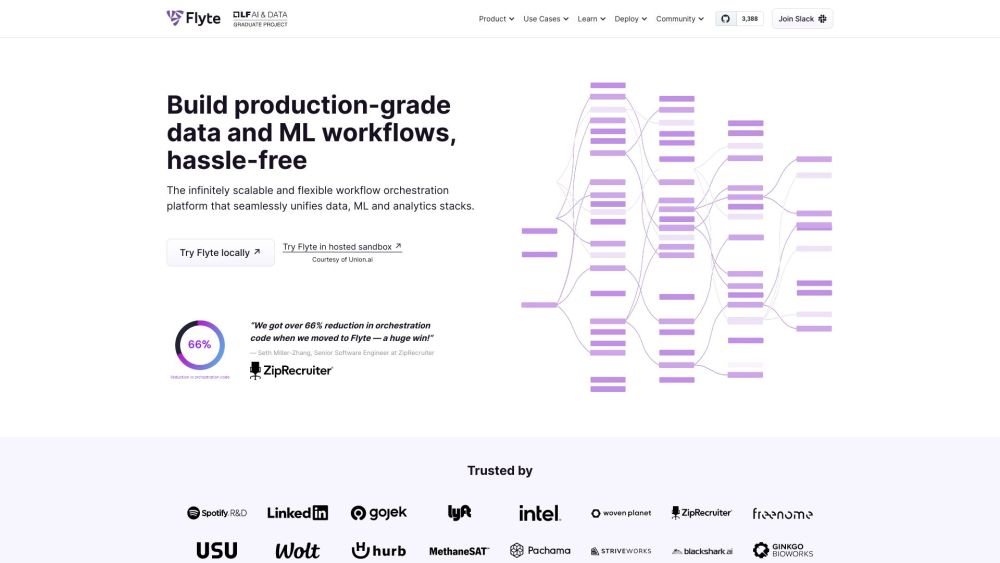Flyte: Unifying Data, ML, Analytics for Effortless Workflows
Flyte is an infinitely scalable and flexible workflow orchestration platform that seamlessly unifies data, ML, and analytics stacks. It helps in building production-grade data and ML workflows hassle-free.


What is Flyte?
Flyte is a robust platform designed for scalable and flexible workflow orchestration, integrating data, machine learning, and analytics seamlessly. It enables the creation of production-grade workflows for data and ML tasks with ease.
How to use Flyte?
To utilize Flyte, follow these steps:
- Design your data and ML workflows using the user-friendly Python SDK or any preferred language.
- Test and refine your workflows on a minimal Flyte setup or sandbox environment.
- Monitor the execution of workflows by tracking data lineage and logs.
- Use FlyteDecks to visualize and render plots or data.
- Deploy workflows to the cloud or on-premises, avoiding infrastructure complexities.
- Adjust resource allocation dynamically to scale your workflows as needed.
Flyte's Core Features
Infinitely scalable and flexible workflow orchestration platform
Seamless integration of data, ML, and analytics stacks
Rapid experimentation with production-grade software
Scalability to manage changing workloads and resource needs
Empowers data practitioners and scientists to work independently
Comprehensive data lineage for tracking workflow health
Collaboration with reusable components
Smooth platform-level integrations
Dynamic resource allocation without infrastructure changes
Visualization and rendering of plots with FlyteDecks
Flyte's Use Cases
Data processing
Distributed model training
Data analytics
Bioinformatics
AI orchestration
Flyte Company
Flyte Company name: Union.ai
Flyte LinkedIn
Flyte LinkedIn Link: http://linkedin.com/
Flyte Twitter
Flyte Twitter Link: https://twitter.com/flyteorg
Flyte GitHub
Flyte GitHub Link: https://github.com/flyteorg/flyte
FAQ from Flyte
What is Flyte?
Flyte is a highly scalable and adaptable workflow orchestration platform that integrates data, ML, and analytics stacks seamlessly. It facilitates the creation of production-grade data and ML workflows effortlessly.
How to use Flyte?
To use Flyte, follow these steps:
- Design your data and ML workflows using the intuitive Python SDK or any preferred language.
- Test and refine your workflows on a minimal Flyte setup or sandbox environment.
- Monitor the execution of workflows by tracking data lineage and logs.
- Use FlyteDecks to visualize and render plots or data.
- Deploy workflows to the cloud or on-premises, avoiding infrastructure complexities.
- Adjust resource allocation dynamically to scale your workflows as needed.
Note: Flyte offers diverse integrations and features for various use cases in data, ML, analytics, bioinformatics, and AI orchestration.
What are the core features of Flyte?
The core features of Flyte include scalable and flexible workflow orchestration, seamless integration of data, ML, and analytics stacks, rapid experimentation with production-grade software, scalability for changing workloads, independent work for data practitioners, comprehensive data lineage tracking, collaboration with reusable components, smooth platform integrations, dynamic resource allocation, and visualization with FlyteDecks.
What are the use cases of Flyte?
Flyte is used for data processing, distributed model training, data analytics, bioinformatics, and AI orchestration.
Is there pricing information available for Flyte?
Please contact Flyte for pricing information.